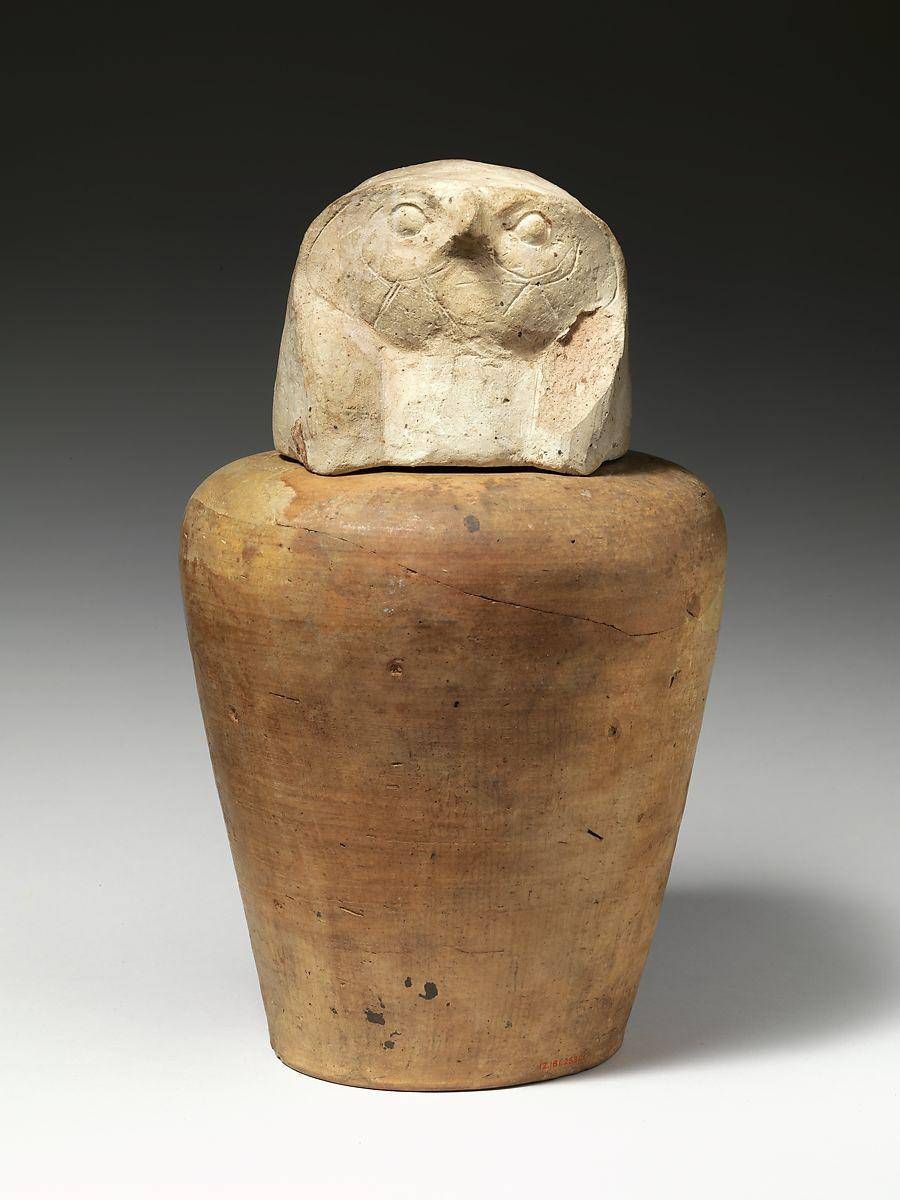
Canopic jar of Tetinakht: Qebesenuef
Unknown Artist
Three canopic jars (12.181.253a–c) were found in a tomb dating to the beginning of Dynasty 18. Two of the lids are shaped like animal heads. This one, with the falcon-headed lid, represents Qebehsenuef, protector of the intestines. The second, which has a jackal-headed lid, represents Duamutef, protector of the stomach. The third jar has a human-headed lid and represents Imsety, protector of the liver. These are three of the Four Sons of Horus. Missing from the set is the fourth jar, which probably had a baboon-headed lid representing the Hapy, protector of the lungs.
These are the earliest datable examples of animal-headed lids on canopic jars, a style that did not become common until later in the New Kingdom. In earlier periods, the lids were different. Old Kingdom canopic jars were often covered with simple disk-shaped lids (see 14.7.16–.19), and from the Middle Kingdom into the early New Kingdom, they were usually covered with human-headed lids (see 11.150.17a–d).
For a complete set of animal-headed canopic jars, see 12.183.1a–d.
Credit: Rogers Fund, 1912
c. 1550-1525 B.C.
Pottery, marl a4
11.8 in
12.181.253c.1-.2
Image and text © Metropolitan Museum of Art, 2020
Where you'll find this

Permanent collection
